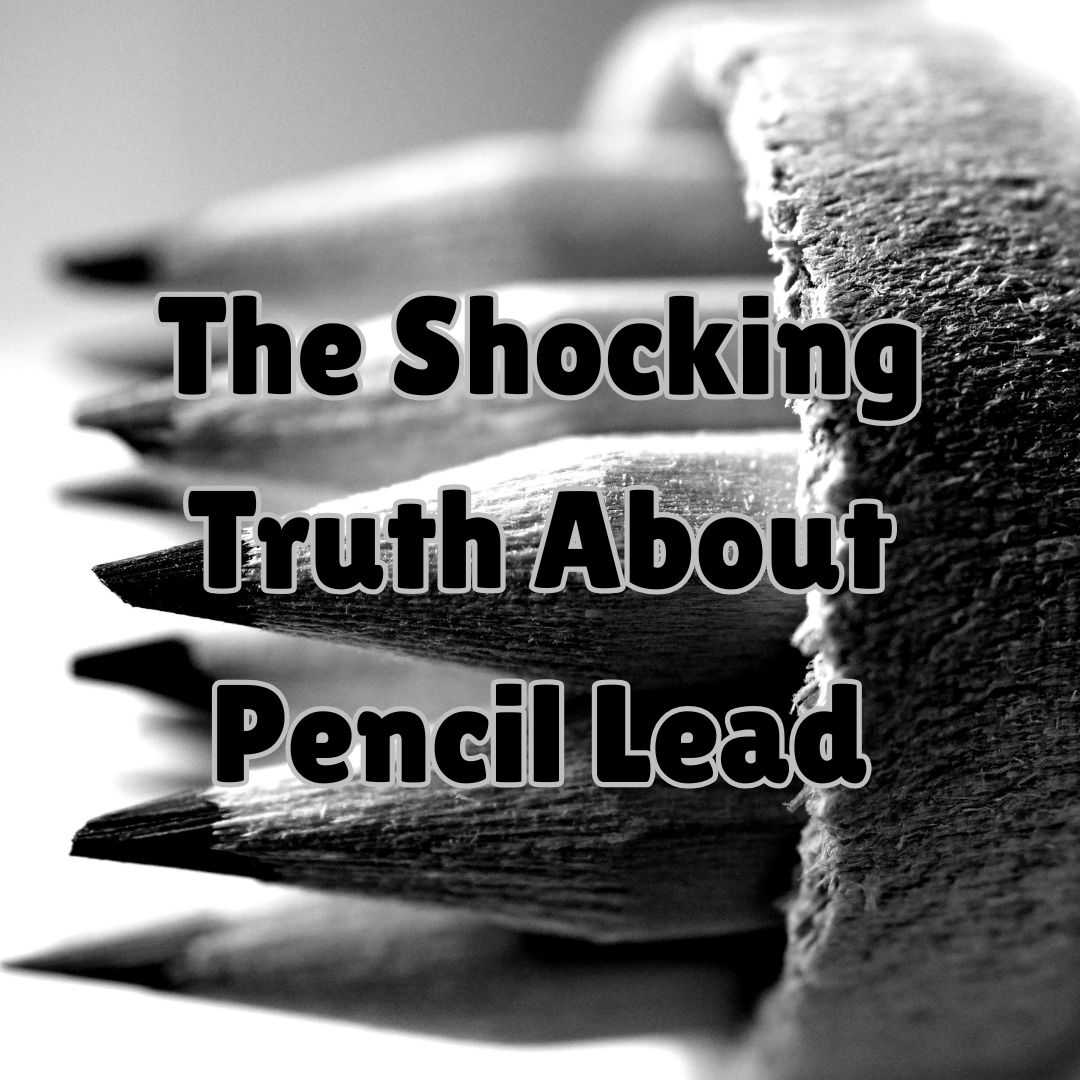
The 1 Shocking Truth About Pencil Lead
Share
You’ve likely used a pencil today—gripped it unconsciously, pressed the pencil lead to paper, then moved on without thought.
The pencil, ever humble and efficient, remains one of the most enduring tools in human history.
Yet its core—the so-called “pencil lead”—is often misunderstood, mislabeled, and surprisingly rich in both history and science.
Despite its ubiquity, most people don’t actually know what pencil lead is or how it’s made.
Let’s explore where this misnomer came from, what modern pencil lead contains, and how its composition affects performance.
Because behind every pencil mark lies a complex balance of chemistry, history, and human ingenuity.
Why Do We Still Call It “Lead”?
The term “pencil lead” is a linguistic relic of scientific misidentification that dates back to 16th-century England.
In 1564, a storm exposed a deposit of an unfamiliar black material in Borrowdale, Cumbria.
Believing it to be a form of lead, locals named the substance “plumbago,” Latin for “lead ore.”
It wasn’t metallic lead at all, but a naturally occurring form of carbon—graphite.
Pure graphite was unknown at the time and easily confused with lead due to its metallic sheen.
But graphite didn’t behave like a metal. It was softer, darker, and left marks easily on paper.
This mistaken identity endured, and the name “pencil lead” became synonymous with the pencil’s writing core.
Even centuries later, the label remains, long after we’ve understood the material’s true nature.
What Is Pencil Lead Actually Made Of?
Modern pencil lead is composed of three key ingredients: graphite, clay, and a small amount of wax.
Graphite provides the color and flow, while clay adjusts the hardness and controls how the lead wears.
The wax or fat, though used sparingly, helps bind the mixture and smooth out the writing experience.
The ratio of graphite to clay determines the character of the line your pencil produces.
More graphite means a softer, darker lead. More clay makes it harder, lighter, and more resistant to smudging.

The ingredients are ground, blended, shaped into rods, fired in a kiln, and then coated with wax.
These slender graphite-clay cylinders are inserted into wooden casings, completing the tool we know so well, filled with what we still call pencil lead.
Though the process has evolved, the core formula remains remarkably close to its early industrial roots.
The Grading Scale of Pencil Lead: What HB Really Means
Pencil hardness is categorized using the HB scale, which balances “hardness” (H) and “blackness” (B).
An “HB” pencil sits in the center—neither too soft nor too hard—ideal for general-purpose writing.
B-grade pencils (like 2B, 4B, 6B) are softer, darker, and more expressive, popular with artists.
H-grade pencils (such as 2H, 4H, 6H) are harder, lighter, and often used in drafting or fine work.
This grading system is not arbitrary—it directly reflects the clay-to-graphite ratio in each pencil core.
More clay equals greater hardness. More graphite enhances softness and depth of color.
Artists often use softer grades for rich, expressive shading, while engineers favor harder leads for precision.
Writers usually gravitate toward HB or #2 pencils, prized for their consistency and ease of use.
A Short History of the Pencil’s Evolution
The earliest pencils were rudimentary—strips of pure graphite wrapped in string or encased in wood.
Italy is credited with refining the wooden pencil format in the 16th century, adding elegance and utility.
By the 18th century, England had the world’s only known supply of pure graphite.
This monopoly made Borrowdale graphite highly valuable and closely guarded by the British Crown.
Eventually, the secret got out. France, under Napoleon, developed a synthetic process using powdered graphite and clay.
This innovation broke England’s monopoly and laid the groundwork for the modern pencil industry.
Germany’s Faber-Castell led further refinement of pencil production in the 19th century.
The United States soon followed, introducing large-scale manufacturing and standardizing the #2 pencil we know today.
Today, graphite is mined in places like China, Brazil, and Canada—no longer solely in England.
Yet the mechanical and artistic relevance of the pencil remains as strong as ever.
Why Pencil Hardness Still Matters
Hardness affects not just how a pencil feels, but also how your work appears on the page.
A hard lead creates crisp, controlled lines that resist smudging and last longer before needing sharpening.
These are ideal for architects, engineers, and anyone requiring fine detail or technical accuracy.
On the other hand, soft leads produce deep, dark marks with minimal pressure—perfect for expressive drawing.
However, soft leads dull more quickly and can smudge easily, especially on slick or textured paper.
That’s why artists often work with a range of pencil grades to control tone, contrast, and line quality.
The feel of the pencil against the page can also shift dramatically depending on the grade.
Some users prefer the tactile feedback of harder leads; others favor the buttery glide of softer ones.
Choosing the right pencil is more than preference—it’s a decision rooted in how you think and create.
The Science Behind Graphite’s Behavior
Graphite’s unique properties stem from its molecular structure—carbon atoms arranged in hexagonal layers.
These layers slide easily over one another, which is why graphite leaves marks so effortlessly on paper.
Clay, by contrast, adds structure and resistance to the sliding, making the mark lighter and more precise.
This interplay between graphite and clay is what gives the pencil its distinctive feel and function.
During production, graphite and clay are carefully mixed, extruded, and fired to achieve the desired grade.
A kiln firing solidifies the structure, while a wax coating reduces friction and enhances smoothness.
Every component—from the exact grain size of the graphite to the mineral composition of the clay—matters.
Even slight variations can influence how a pencil performs, making quality control crucial in manufacturing.
Fascinating Pencil Facts
- A single pencil can draw a continuous line over 30 miles long.
- Graphite is one of the only natural substances that conducts electricity and lubricates at the same time.
- During the Cold War, space agencies debated pencil use due to flammability and graphite dust.
- The colored core in colored pencils contains no graphite—only pigments and wax or oil binders.
- Early American pencils were painted yellow to emulate prestigious Chinese graphite, which was highly prized.
These facts only scratch the surface of what makes pencils quietly extraordinary.
Why the Pencil Still Matters
Despite advances in technology, the pencil endures—simple, inexpensive, biodegradable, and endlessly versatile.
It requires no charging, works at any angle, and offers complete tactile control over your work.
Writers, artists, engineers, and students all turn to it when they want clarity and creative control.
And at the heart of this deceptively basic tool is its misunderstood core: the so-called “lead.”
Now that you know what’s inside—and why it matters—you’ll never look at a pencil the same way.
Find Your Next Favorite Pencil
Whether you're sketching, writing, or designing, the right pencil can elevate your creative process.
From soft graphite for bold shading to hard leads for crisp detail, we’ve sourced the finest available.
Explore our selection of premium pencils—crafted with precision, tested for performance, and ready for your ideas.
Shop now and discover what the right pencil can do for your work.


